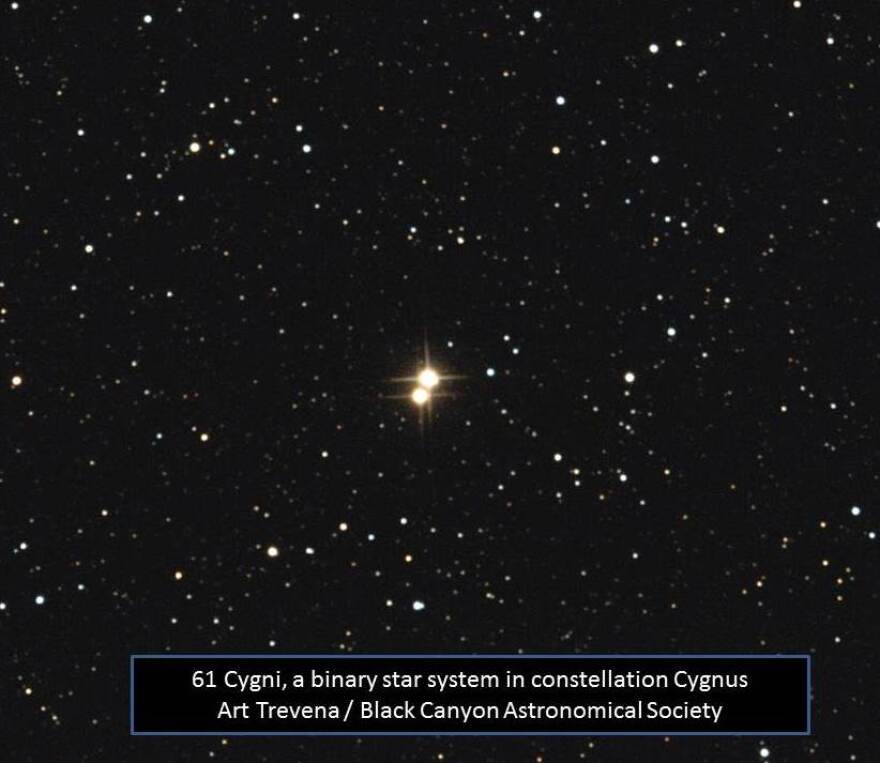Binary Stars
Next time you see the Big Dipper out of the corner of your eye, take a look at the star in the middle of the handle. If you have decent eyesight, you may see not one, but two stars: a brighter star known as Mizar, and a fainter star called Alcor.
Once used as a test of vision, Mizar and Alcor are perhaps the most famous example of what astronomers call a binary star system, which consists of two stars gravitationally bound to one another that orbit a common center of mass. If more than two stars are present, the group is known as a multiple star system. While our eyes can detect just two stars in the Alcor/Mizar system, telescopes and spectroscopy reveal that it is actually a SIX star system. Imagine living on a planet with six suns!
Binary and multiple star systems can be beautiful sights. While Alcor and Mizar is one of the few pairs visible to the naked eye, many fine binary stars can be seen with a good pair of binoculars. Examples visible this time of year include Albireo, in the constellation Cygnus, Epsilon Lyrae, adjacent to the bright star Vega, and Beta Capricorni, in the constellation Capricornus. Even Polaris, our North Star, has a companion that is visible through a small telescope!

Binary stars don’t just look cool; they can also be used to help astronomers unravel the mysteries of the universe. Binary stars provide the best way for astronomers to calculate the mass of distant stars by using Newton’s & Kepler’s Laws of planetary motion. While the idea of stars orbiting one another might seem exotic, multiple star systems are actually common. Astronomers estimate that half or more of the stars in our Milky Way Galaxy have a companion… or even two or three! Several planets have also been discovered orbiting binary stars. Perhaps the idea of Tatooine, the planet with two suns in Star Wars, isn’t so far-fetched after all. So next time you think it’s hot outside, thank your lucky stars that we orbit around the Sun, a single, rather than a binary star!
“Western Slope Skies” is produced by members of the Black Canyon Astronomical Society. This episode was written & voiced by Zach Schierl.




